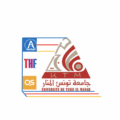
Conserve and sustainably use the oceans, seas and marine
resources for sustainable development
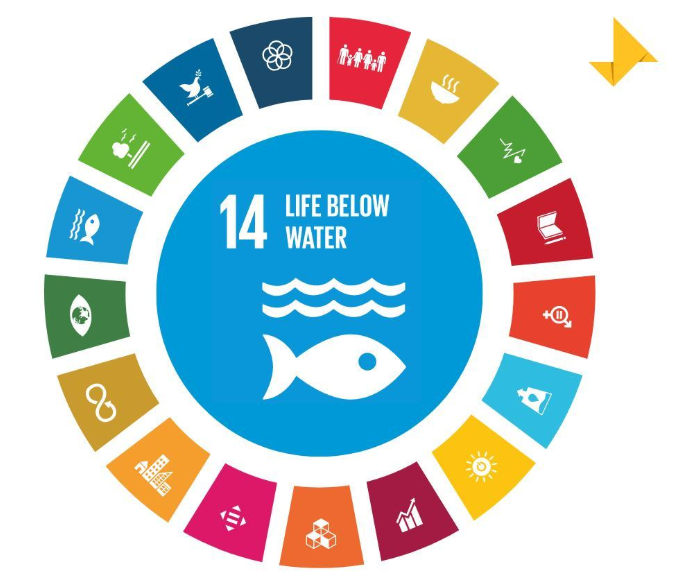
Pr.Moncef Guedari, UTM,SDG 14 Ambassador
“The University of Tunis El Manar has been a leader in research focusing on Sustainable Development Goal 14, which aims to conserve and sustainably use the coastal wetlands and marine resources. This report highlights significant research initiatives conducted during the 2024 university year, addressing critical issues such as marine pollution, biodiversity loss, and ecosystem health in Tunisia. These studies reflect the university’s commitment to advancing scientific knowledge and promoting sustainable practices in aquatic environments.”

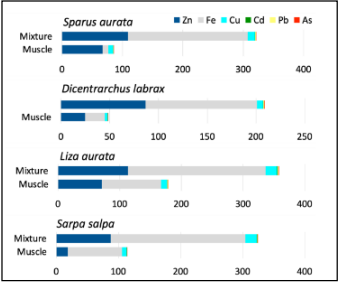
1. Trace Metals Contamination in Bizerte lagoon
The study titled “Human Health Risk Assessment of Trace metals in Four Fish Species Harvested from the Bizerte Lagoon (Tunisia)” by Telahigue et al., investigated the levels of Cd, Pb, As, Fe, Cu and Zn, in commonly consumed fish species. The results showed that mixed fish tissues exhibited significantly higher concentrations than muscle.
Concentration of heavy metal(oids)(Cd, Pb, As, Fe, Cu, and Zn) in the muscle tissue and the total mixed fish tissues of Liza aurata, Dicentrarchus labrax, Sparus aurata, and Sarpa salpa (Source: nstmbulletin.tn).
This research assessed potential health risks, particularly for vulnerable populations such as children and pregnant women, highlighting the urgent need for regulatory measures to mitigate trace metal contamination in coastal waters. The findings underscore the importance of monitoring fish safety and implementing stricter pollution controls to protect public health.
Study area and location of sampling sites (Source: doi.org)
2. Nutrient Cycling and Diagenetic Change in Tunis Lagoon
In “Impact of Dredging on Diagenesis and Nutrient Release in a Restored Mediterranean Lagoon (Lagoon of Tunis, Tunisia)” by H. Ben Mna et al. (2024), the ecological impacts of dredging activities were thoroughly examined.
The study revealed that while dredging might initially enhance water quality by removing accumulated sediments, it can lead to long-term nutrient release and significant diagenetic changes that disrupt the ecological balance of the lagoon. This research emphasizes the need for careful management of dredging operations to avoid detrimental effects on local ecosystems.
Study area and location of sampling sites (Source: doi.org)
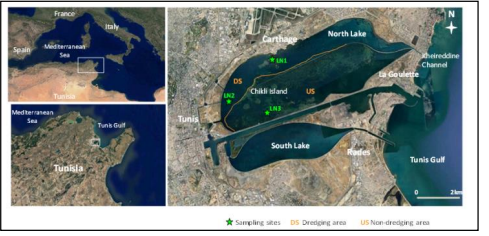
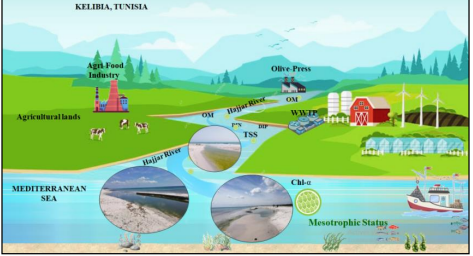
3. River Nutrient Inflows and Coastal Ecosystem Health
The study titled “River Nutrient Inflows and Coastal Ecosystem Health in Northeast Tunisia’s Kelibia Mediterranean Region” by S. Melki et al. assessed the impact of nutrient inflows from coastal rivers on marine ecosystems.
The research found that excess nutrients from agricultural runoff and urban discharges lead to algal blooms, resulting in oxygen depletion and negatively affecting fish populations. The findings highlight the critical need for improved agricultural practices and effective wastewater management to mitigate nutrient loading and protect coastal ecosystems.
Schema representing River Nutrient Inflows and Coastal Ecosystem Health (Source: doi.org)
4. Fish Populations and Stock Structure
“Discriminant Stock Structure of Diplodus annularis (Perciformes, Sparidae) in Tunisian Waters Inferred from Saccular Otolith Morphometry and Microchemistry” by M. Ben Ghorbel et al., analyzed the size dimensions and microchemical structure of two populations of annular seabream, collected from Djerba and Kerkenah islands.
By employing morphometric and chemical analyses of otoliths, the researchers identified distinct stock groups within Tunisian waters. This work is vital for developing targeted fisheries management strategies that take into account the specific characteristics of different fish stocks, ultimately promoting sustainable fishing practices.
5. Toxic Effects of Heavy Metals
“Toxic Effects Assessment of Acute Cobalt Exposure on Stress Biomarkers Responses of Cyprinus carpio Intestine” by Chetoui et al. (2024) documented significant biochemical changes and stress responses in common carp due to acute cobalt contamination.
The study revealed how trace metal exposure can disrupt physiological functions in aquatic organisms, underscoring the necessity for pollution control measures to safeguard aquatic health.
Assessment of Acute Cobalt Toxicity on Stress Biomarkers in Cyprinus carpio Intestine (Source: ejsitjournal.com)

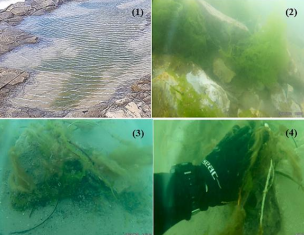
6. Oil Pollution in Mediterranean Sea
An integrated GIS, Remote Sensing, Geochemical, and Ecological Approach for Correlating and Identifying Oil Contamination Sources of Tunisia’s Northern Coast, by Belhadj et al., evaluates the level of hydrocarbon pollution in the Gulf of Tunis, a location in the western Mediterranean region.
Utilizing a combination of GIS, remote sensing, geochemical analysis, and ecological monitoring, the study reveals significant hydrocarbon pollution in surface sediments, with total petroleum hydrocarbon (TPH) levels ranging from 1.4 mg/g to 8.26 mg/g. The primary sources identified are petrochemical industries in the south and marine traffic in the north. The findings indicate a detrimental impact on the surrounding ecology, particularly the benthic community, and an increase in eutrophication.
Eutrophication confirmed by opportunistic macroalgae Cladophora rupestris and Ulva rigida (Depth: 0–10 m). Photos taken in 2019 in the Bay of Tunis (Source: sciencedirect.com)
Conclusion
The University of Tunis El Manar has made substantial contributions to understanding and managing marine ecosystems related to ODD 14.
Through diverse research efforts addressing marine pollution, biodiversity assessments, and the ecological dynamics of aquatic systems, these studies provide critical insights for policymakers and conservationists. The university’s commitment to addressing these vital issues ensures that Tunisia can work towards sustainable use and conservation of its marine resources, promoting the health of both ecosystems and human populations.
Continued collaboration among researchers, policymakers, and local communities will be essential in achieving these goals.
